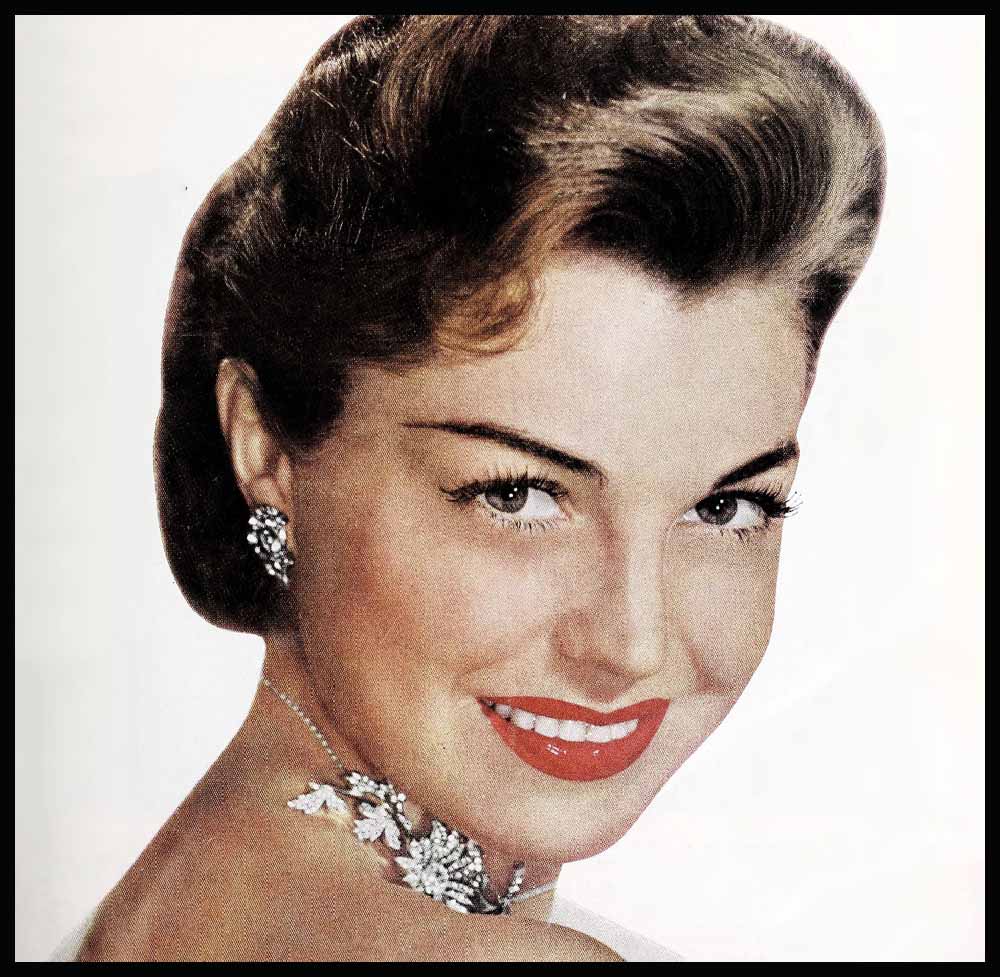
Esther Williams’ Wonderful Christmas
This Christmas, when Esther Williams “goes home” to Inglewood, she’ll be carrying an extra bundle of holiday cheer. Not only will Ben and Benjie and Kimmie be there, but something new’s been added—Susan Tenney Gage!
Today Inglewood is a sprawled-out community of weather-beaten bungalows and small business establishments, on the Southern fringes of Los Angeles. As the crow flies, Inglewood is some thirty miles from a charming yellow early American farmhouse set among towering sycamores and live oaks in Mandeville Canyon—the home of Esther Williams, a swimming star who ran a swim suit into a fantastic career. But as glamour flies, Inglewood is a thousand miles from the heady razzle-dazzle of Hollywood.
It is a quote. PHOTOPLAY MAGAZINE JANUARY 1954
Back in 1919 much of Inglewood consisted of waving alfalfa fields in which the spring showers flung up a myriad of wildflowers. There, from Salt Lake City came Lou Williams and his wife, Bula, and their four children searching for a home. Lou bought a lot of lumber and set to work building a tiny house for his brood on the outermost edges of the community.
And it was in that modest dwelling that Esther Jane, fifth and last child, was born on August 8, 1923—“in the parlor,” recalls her mother, “because there wasn’t any other place available. And a few minutes later, the fat little pink bundle was placed in the arms of her twelve-year-old sister, Maureen, secondary mother until I was strong enough to take care of her. With five children to bring up there was much to do. And I’ve always felt that the sharing of family responsibilities was a privilege and not a burden, so when I asked for help the children gladly gave it. Our little house began to bulge at the seams and Dad began to add rooms.”
Today that simple, vine-clad house—still the home of Mr. and Mrs. Williams—is a symbol to Esther of all that is good and lovely in this world. Though she has recently signed a ten-year contract with her studio which will pay her a staggering sum of money; though she is among the top ten film personalities in drawing power and has, with her husband, Ben, a host of vastly successful business enterprises, that little house in Inglewood stands for all the solid things of life—things you can’t put into words, such as security, faith, happiness. In a symbolical sense Esther has never left home, has never lost the balanced sense of values and the knowledge of a close, loving God, which she gained in that house.
And Esther, while awaiting the birth of her third child, Susan Tenney (a period she described as “being in drydock”), remembered that—particularly during the last month of her pregnancy. Her thoughts were drawn back again and again to her childhood home.
Susan Tenney, a perfect, plump, healthy little girl, weighing seven pounds, fifteen ounces, made her arrival at 4: 30 P.M., October 1.
“Ben and I,” explains Esther’s mother, “waited in the hospital. And although this was the third time, Ben was just as nervous as he’d been before. When Dr. Bradbury told us it was a girl we were overjoyed. For Esther did so want a daughter. Ben smiled tremulously and said, ‘I wonder if I’ll know how to be a good father to a daughter. Boys I know about, but little girls . . .’ I assured him he’d be the wonderful father he’s always been.
“And when the nurse showed us the baby I was amazed. She looked exactly like Esther did when she was born—the same features and a shock of brown hair. The boys, Benjie and Kimmie, resemble Ben, I think, but little Susan resembles her mother. In fact, when the baby was moved into Esther’s room, the nurse had brushed her hair into a big curl on top of her head, and she looked more like Esther than ever.
“Esther insisted on having the baby with her from the first. She’s truly maternal and doesn’t believe a new-born baby should be exiled in a hospital nursery, away from her mother. The first time I went to see Esther she was radiant and told me again that childbirth is the greatest experience a woman can know.”
And Esther safely home after only four days in the hospital, continued to be radiantly happy. “Ben and Mother wanted me to stay longer but I can rest better at home. I started my exercises to regain my figure immediately and I expect to be swimming again in a few weeks. The baby is so healthy . . . and so good. We named her Susan because we like it and Tenney because it’s a name in Ben’s family. But we’ll never call her Susie!
“The boys are showing great interest in the baby. I remember that my mother told me that she asked my brothers and sisters to pray for me before I was born and I did the same thing with Benjie and Kimmie. It brought a lump in my throat to hear them say, ‘And God bless the baby that’s coming to live with us.’ I hope they’ll pass that on to their children.
“We Williamses are a typical American family, going back to Revolutionary days on both sides, though our ancestors were a mixture of Dutch-Welsh-Irish-Scotch and a little English. As children in that little Inglewood house we always had the riches that money couldn’t possibly buy, though there seemed to be more Williamses than there were dollars. We went through assorted depressions and recessions in those years; our house became more and more worn; but I think I can speak for all of us when I say that there was never a palace, anywhere in the world, that ever held so much happiness or heard such laughter. Our house was brimming with furious life, noise, gaiety and there were always spur-of-the-moment parties.
“I suppose that with everyone the Christmas season draws forth nostalgic memories of Christmases long past. I can see our Christmas trees now, through the years, each one gleaming brightly in the reds, greens and silver of Yuletide. Trimming the tree was a real ceremony. And the red-and-white striped peppermint candy canes (so precious to us when candy was a luxury not easily come by); the stockings stuffed with homemade gifts and all of us babbling with excitement.
“Mainly our Christmases have been joyous, but we’ve had a few sad ones— like the time I lost our first baby and again when our wonderful oldest brother Stanton passed away suddenly at sixteen. He was the most talented in the family—and it was because of him that we are here in Los Angeles. Mother and Dad were married forty-five years ago this past June. She was a school teacher in Dodge City, Iowa, ninth child in a poor, hard-working family and she had learned how to make do with little. Dad is a commercial artist; was working as a theatrical sign painter in Salt Lake City when my brother Stanton was selected by Marjorie Rambeau to play a part on the stage. When she wanted him to go along with the company to Los Angeles the family decided to go too.
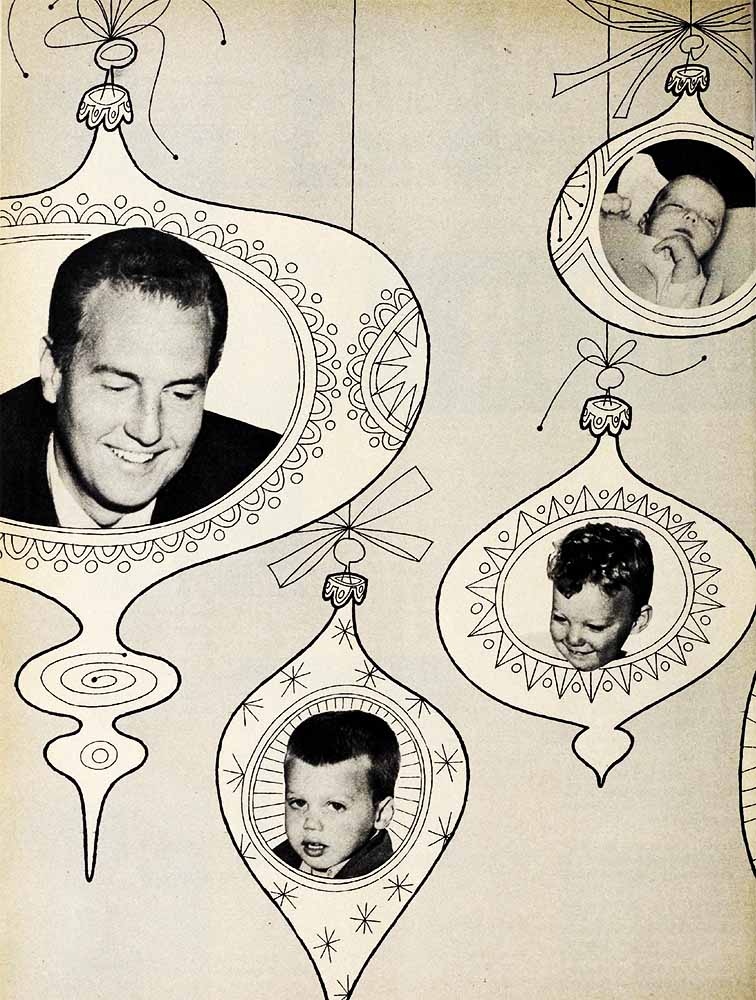
“The first Christmas I remember was when I was a roly-poly tot of three with a Buster Brown haircut. An aunt sent me a doll. Right away I named her Margaret. Ann and loved her to pieces—literally, because next Christmas, Dad, always wonderful with his hands, repaired her broken body, painted a new face for her and even glued on new blonde hair. Mother, who made all our clothes, turned out a whole new party outfit from remnants. Every Christmas Margaret Ann was thus renewed again and when I was six the aunt came to visit and noticing the doll, told me, ‘Esther Jane, I’m taking you right down town to buy a new doll—anyone you select.’ And my eyes fell on a fabulous French doll that cost seven dollars, a mint of money in those days. I took her home, but you know something, she was just too grand to play with, and I stood her up on the dresser and just looked at her. I continued to play with Margaret Ann.”
But the most wonderful Christmas of all for Esther was when she was seven and her dad made a real two-story dollhouse with four rooms, a bath, kitchen and winding staircase. All the kids in the neighborhood, Esther remembers, spent painstaking hours helping her cut out paper furniture to scale, paste it on cardboard and create a whole family of paper dolls for the house.
Every Christmas Mr. Williams added innovations and refinements to that magnificent structure, even installing, in later years, tiny electric lights in each room. And it is still a great family treasure right now, says Esther, “My sister June’s daughters have it, but I’m serving notice on them that Susan will need it soon.
“When I was a child the spirit of Christmas descended on the Williams elan a couple of months ahead of schedule. We couldn’t afford store-bought gifts and tree decorations, and so we used ingenuity in making and inventing all sorts of things. When funds were scarcer than usual we didn’t have a real Christmas tree, but instead we searched out pine boughs which Daddy wired together to make the most beautiful Christmas tree in town. My gift to him every year was a supply of shaving soap. And I remember once when I was six, after I’d painstakingly saved pennies and nickels for the gift and had the money carefully hidden, a carnival opened right in our neighborhood. I was in an ecstasy of excitement and wanted to blow the whole sum on peanuts for the baby elephant whom I loved best of all. I didn’t mind not buying hot dogs and popcorn though they smelled delectable; instead, I took jelly sandwiches from home. But the peanuts for the elephant! Finally I borrowed a nickel from my horde and I was dismayed to see how quickly that elephant ate what it bought.”
Time moved just as quickly in the Inglewood home, for every holiday and birthday party was an event of great importance. Easter eggs were dyed and bunnies made; Maybaskets fashioned of colored paper were a special delight of sister Maureen who would gather the brood early for wildflower-picking expeditions to the nearby vacant lots. It was Maureen, also, who organized camping trips, beach parties and taught the youngsters to swim. And when the community decided that a playground and swimming pool would be a wonderful asset, they all besieged the city fathers. Esther was about eleven when the pool opened there behind the fence back of their house, and she and her brother David spent hours perfecting their strokes and, unknowingly, paving the way for Esther’s spectacular swimming career.
Any talents the Williams’ children possessed were aided by the whole family. It was only natural to move to Los Angeles to further brother Stanton’s stage career. And one Christmas might have been a bit marred for Esther if it hadn’t been for Mrs. Williams, a handsome, graying older edition of her talented daughter, Esther. “Es was in the first grade,” Mrs. Williams remembers, “and she was in heaven because she’d been selected to be a sunflower in the chorus in a Christmas operetta at school. The leading role was portrayed by a sweet little singer who has since been heard from—Deanna Durbin. One noontime Es came running into the kitchen crying the biggest tears you ever saw. ‘I can’t be in the play,’ she spluttered between sobs. ‘The teacher says I don’t know the steps and she took me out. Said I had two left feet.’ It was a real crisis and though I was in the midst of cooking and ironing I dropped everything, went to school and asked the teacher if she wouldn’t show me the steps and I, in turn, would teach them to Es at home. And so we saved her Christmas.”
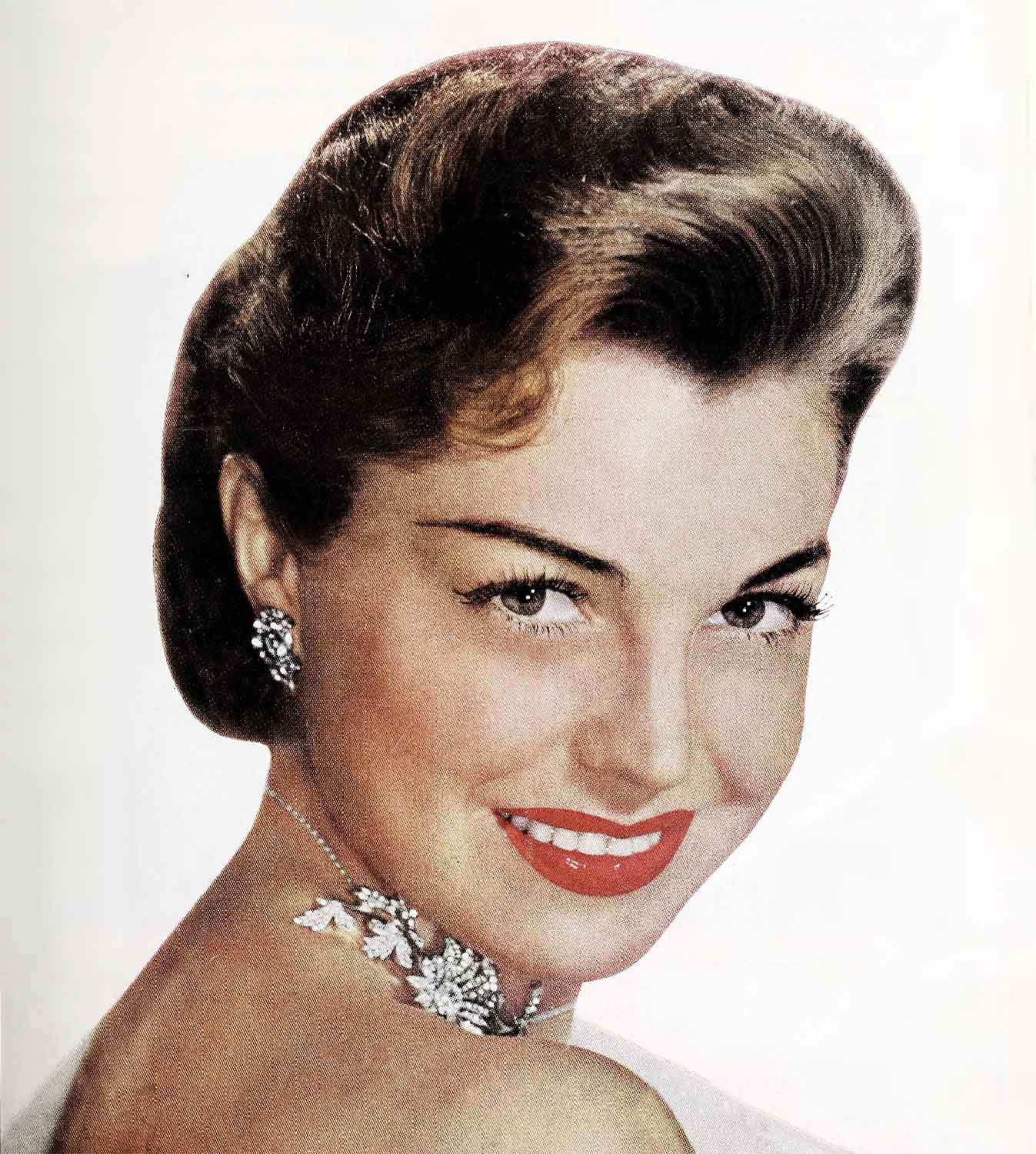
It took Esther a full year to decide to train for championship swimming. She has since spent more time in the water, with the possible exception of a few million fish and the United States Fleet, than any buoyant body since Noah’s Ark. Oddly enough, Esther showed the same indecision about accepting a film contract. So it was strange that, at eighteen, away from home for the first time at the Aquacade in San Francisco, she should have so quickly made up her mind to elope with a young USC medical student Though they both tried hard, the hasty marriage didn’t turn out well and Esther returned to the little house in Inglewood.
But later, after her divorce, she was to meet the man who has made the ensuing Christmas celebrations memorable. She didn’t know it, however, at the time. But Mrs. Williams, a very wise lady indeed, knew immediately that Esther and Ben Gage would eventually marry—that they “were right and right for each other.”
When Esther lost her first baby she was desolate. A natural mother, as time has shown, she had cared for nieces and nephews for years, had imbibed large doses of child psychology from her mother and desperately wanted children. Only the faith she’d gained since babyhood sustained her—only the Bible’s statement, “All things work together for good, to them that love God,” helped her while she re-affirmed her faith.
To ease her sorrow Esther plunged into a program to help blind children learn to swim, and found peace. And became part of another heartwarming Christmas custom—an annual party for the children at the Los Angeles Nursery School, for Visually Handicapped Children. As a Christmas gift Esther and Ben presented the school with a swimming pool.
At this year’s family Christmas celebration, the new baby, little Susan Tenney, will be the big feature attraction. For the Williams elan is one of the closest-knit imaginable. They see each other frequently and warmly greet each other—and each new addition—with the joyful abandon of loved ones separated for years.
It’s been ten years since Esther Williams first splashed onto the nation’s screens and became an overnight star. And she has remained top box office ever since. Yet she has changed less in her outlook probably than any other Hollywood star.
Could this be because of her wholly normal upbringing? She is, those who work with her agree, as stable, sane and adjusted to her surroundings as it is possible to be. As Esther explains, “I have always had to have people in my life whose love, strength and religious faith would act as a springboard from which to dive in and be my whole self. At first it was my family. Then I found Ben. It’s my feeling that children from large and happy families like the Gages of Evanston, Illinois, and the Williams of Los Angeles make the best marriage material. What I’ve learned from my childhood home I’ve tried to pass on to my children. Ben and I are remembering a wise remark of my mother’s in bringing up our family: ‘Not to have too much money is the most fortunate thing that can happen to children.’ ”
The little Inglewood house has played a big role in the Gage family life. And will continue to do so. There the true spirit of Christmas lingers long after the mistletoe is dry and the tree has lost its needles. And visible in the living room with its old-fashioned, well-worn furniture is a charming Christmas reminder on the wall—a green felt Christmas tree, sequin-spangled, framed behind glass, a gift from daughter June. Twenty little circles cut out in the tree are filled with tiny portraits of the whole Williams elan. As yet they haven’t added the newest one—Ben and Esther’s Susan Tenney. But at the 1953 celebration, the baby’s picture will be there. And so will the baby.
For Esther Williams, in the deepest spiritual sense, has never really left home.
THE END
It is a quote. PHOTOPLAY MAGAZINE JANUARY 1954


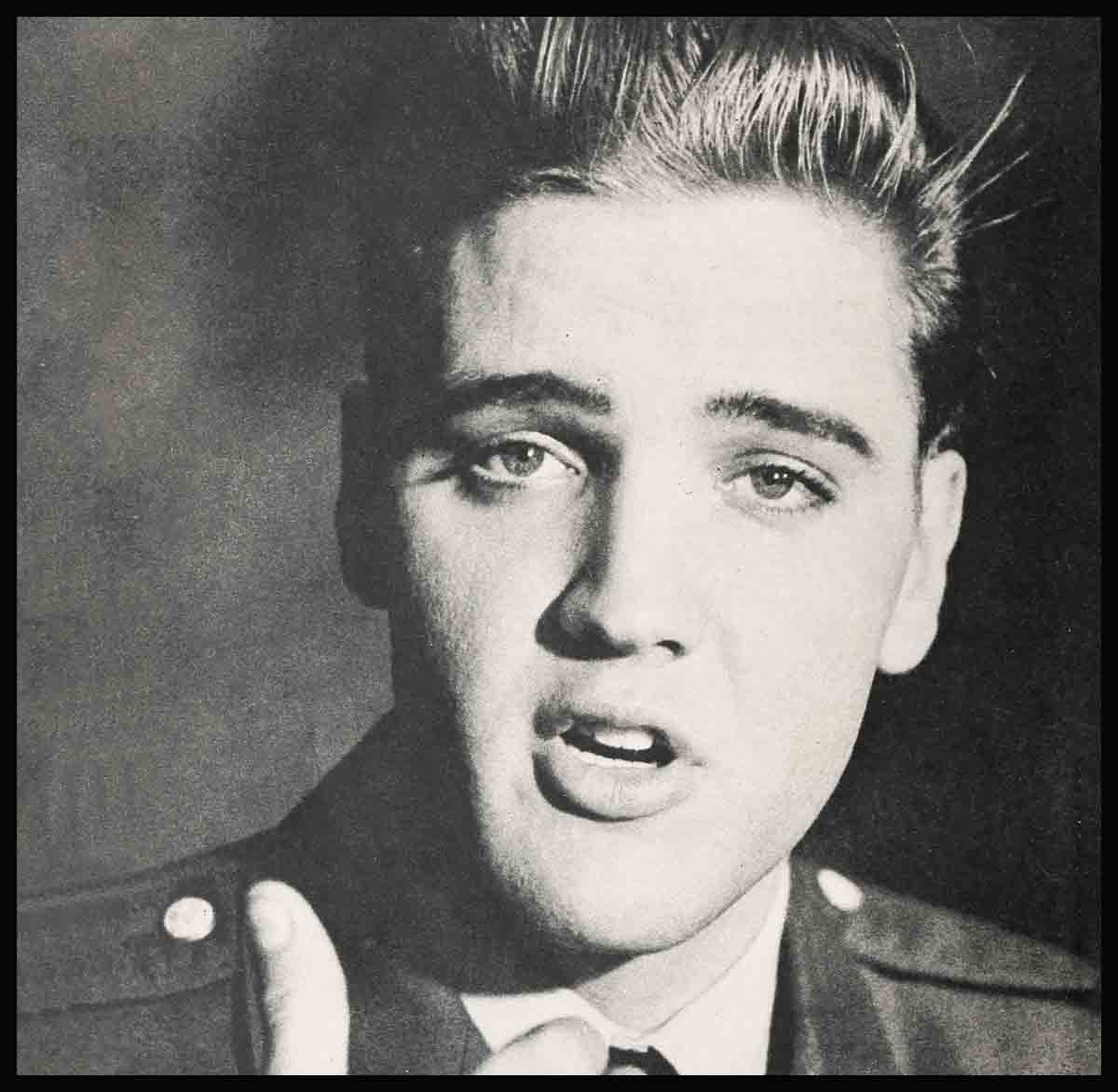

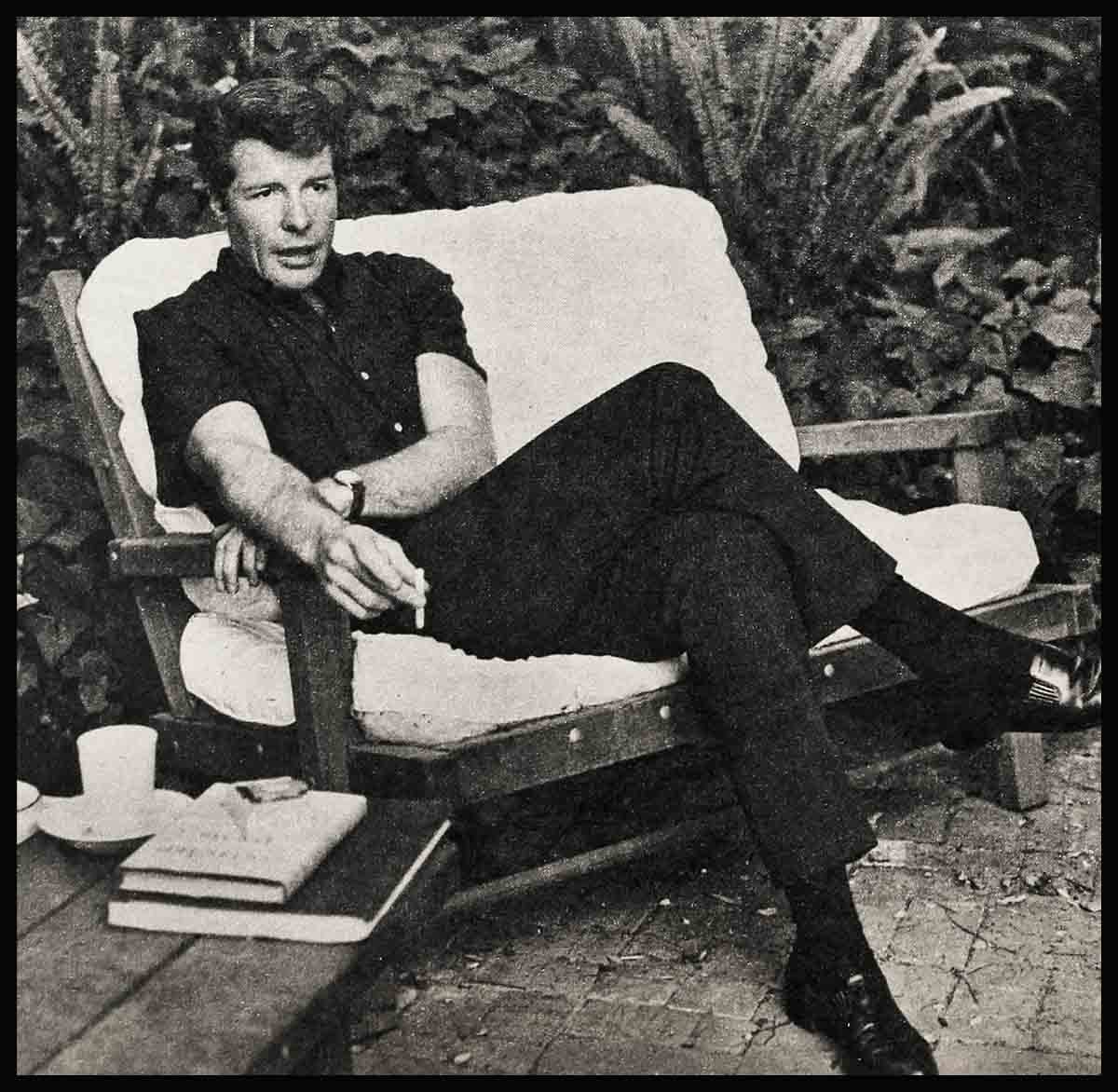
No Comments